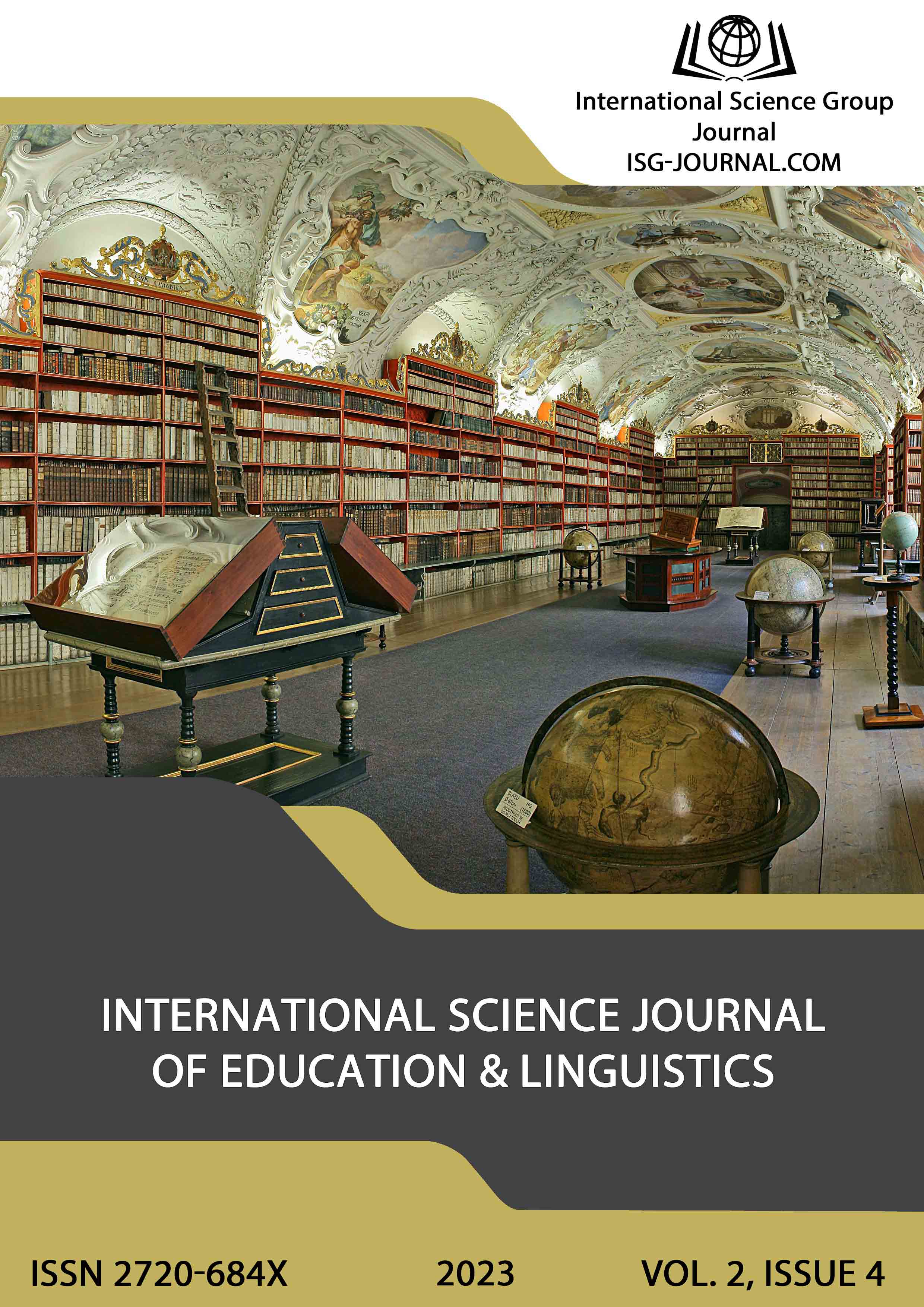Content and language integrated learning: enhancing language acquisition and content understanding
DOI:
https://doi.org/10.46299/j.isjel.20230204.05Keywords:
Content and Language Integrated Learning (CLIL), language acquisition, content understanding, language proficiency, engagement, cultural competence, intercultural competence, active learning, authentic language, educational approachAbstract
Content and Language Integrated Learning (CLIL) is an educational approach that integrates the teaching of content subjects with the learning of a foreign or second language. This article explores the concept of CLIL, its benefits, and provides evidence-based citations to support its effectiveness in language acquisition and content understanding. The benefits of CLIL include enhanced language acquisition, improved content understanding, increased motivation and engagement, and the development of cultural and intercultural competence. Research has shown that CLIL students demonstrate improved language proficiency in all language skills, including listening, speaking, reading, and writing. CLIL also facilitates a deeper understanding of academic content by allowing students to explore complex topics using authentic language. Furthermore, CLIL programs promote active learning and intrinsic motivation, as students perceive the relevance and utility of the language being learned. The integration of language learning with content subjects creates opportunities for cultural and intercultural competence development, as students are exposed to diverse perspectives and collaborate with individuals from different linguistic backgrounds. Multiple studies have provided evidence supporting the effectiveness of CLIL. Research has consistently shown that CLIL programs result in significant improvements in language proficiency, both in receptive and productive skills. Additionally, CLIL students have demonstrated higher levels of motivation and engagement compared to those in traditional language learning settings. The findings from these studies highlight the positive impact of CLIL on language acquisition and content understanding. As the demand for multilingual individuals continues to grow in our interconnected world, CLIL stands as a valuable educational approach that equips learners with language skills and subject knowledge simultaneously. This article serves as a comprehensive overview of CLIL, providing educators, researchers, and policymakers with insights into the benefits and evidence supporting the implementation of CLIL programs in educational settings.
References
Breeze, R., & Martínez Agudo, J. D. (Eds.). (2021). Content and language integrated learning: Issues, challenges and future prospects. Routledge.
Coyle, D. (2013). CLIL: Promoting a change in beliefs and practices. In T. Nikula, E. Dafouz, P. Moore, & U. Smit (Eds.), Conceptualising integration in CLIL and multilingual education (pp. 13-28). Multilingual Matters.
Coyle, D., Hood, P., & Marsh, D. (2018). CLIL: Content and Language Integrated Learning (2nd ed.). Cambridge University Press.
Coyle, D., & Smit, U. (Eds.). (2021). The Cambridge Handbook of Content and Language Integrated Learning. Cambridge University Press.
Dalton-Puffer, C. (2007). Discourse in Content and Language Integrated Learning (CLIL) classrooms. John Benjamins Publishing.
Dalton-Puffer, C., & Nikula, T. (2016). Discourse perspectives on CLIL. John Benjamins Publishing Company.
Genesee, F., Lindholm-Leary, K., Saunders, W., & Christian, D. (2006). Educating English language learners: A synthesis of research evidence. Cambridge University Press.
Lasagabaster, D., & Doiz, A. (2016). CLIL and motivation: The effect of individual and contextual variables. Language Learning Journal, 44(2), 137-150.
Lorenzo, F., Casal, S., & Moore, P. (2021). Content and Language Integrated Learning (CLIL) in Higher Education: A Systematic Review. Frontiers in Education, 6, 741677.
Marsh, D. (2002). CLIL/EMILE-The European dimension: Actions, trends and foresight potential. European Commission, Directorate General for Education and Culture.
Mehisto, P., Marsh, D., & Frigols, M. J. (2008). Uncovering CLIL: Content and Language Integrated Learning in bilingual and multilingual education. Macmillan.
Mehisto, P., & O'Connor, B. (2020). CLIL for English language learners: Methods, materials, and resources. Routledge.
Nikula, T., Dalton-Puffer, C., & Llinares, A. (Eds.). (2013). Research methodologies in CLIL and bilingual education. Multilingual Matters.
Pérez-Cañado, M. L. (2017). Content-based instruction in second and foreign language teaching: Methods and approaches. Springer.
Ruiz de Zarobe, Y., & Jiménez Catalán, R. M. (Eds.). (2020). Content-based instruction and content and language integrated learning: Research meets practice. John Benjamins Publishing Company.
Smit, U., & Dafouz, E. (Eds.). (2012). Integrating content and language in higher education: Perspectives on professional practice. Multilingual Matters.
Downloads
Published
How to Cite
Issue
Section
License
Copyright (c) 2023 Alla Shykun

This work is licensed under a Creative Commons Attribution 4.0 International License.





